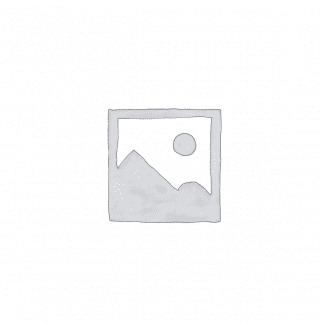ABSTRACT
Cation exchange reactions in calcium, strontium and
lead hydroxy apatites have been carried out by the method of
co-precipitation in aqueous ammonia and acidic media.
Solid state synthesis was applied in some cases. Products
of the substitution reactions were analysed by atomic
absorption spectrometry, infra-red and ultraviolet/visible
spectrophotometry and in some cases by X-ray powder
diffractometry.
Magnesium formed solid solutions of calcium-magnesium
hydroxyapatite in the entire composition range at pH 12.
Solid solutions of calcium-zinc hydroxyapatite in the whole
series were also obtained in both basic (pH = 10.5) and
acidic (pH 5.0 -6.0) media. It is the first time that the
formation of calcium-zinc hydroxyapatite solid solutions in
the entire range is being reported. Calcium-lead
hydroxyapatites in the entire series were obtained by solid
state synthesis at 900°C. Formation of solid solutions
between Mg2+ and Ca2- appears to be dependent on the pH of
the precipitating medium. Replacement of Ca2+ by Mg2+ in
the apatite lattice resulted in enhancement of peak
intensity and sharpening of X-ray powder diffraction peaks.
Expansion of lattice parameters was observed when Pb2+
substituted Ca2+ in hydroxyapatite. Infra-red frequencies
for the OH and P04 groups were shifted to lower values in
calcium-magnesium, calcium-lead and calcium-zinc
4 with increasing replacement of Ca2+
.
viii
Cadmium replaced lead in lead hydroxyapatite (PbHA) in
the whole series in basic (pH = 10.5) and acidic media (pH
5.0 – 6.0). Replacement of Pb2+ by Cd2+ in the PbHA caused
the absorption frequencies for the OH stretching mode to
shift to lower values while those for the PO4 group shifted
to higher values as the Cd2+ content increased. X-ray
powder diffraction peaks for cadmium-lead hydroxyapatites
are sharpened with increasing concentration of cadmium.
Solid solutions of barium-lead hydroxyapatite were
obtained only in the range of barium concentration from 0
to 40% in aqueous medium. Amorphous precipitates were
obtained for reactions beyond 40 atom % barium. Solid
solutions of barium-lead hydroxyapatite were however
obtained for the whole composition range by solid state
reaction between PbHA and barium hydroxyapatite (BaHA) at
9000C Replacement of Pb2+ by Ba2+ in PbHA caused the
infra-red frequencies for the OH group to shift to lower
values while that for the PO4. group shifted to higher
values with increasing barium content. Broadening of X-ray
powder diffraction peaks with increasing barium
concentration was observed.
Solid solutions of strontium-cadmium, strontium-lead
and strontium-zinc hydroxyapatite were also obtained in the
entire composition range in basic and acidic media. Cd2+
and Zn2+ showed similar behaviour towards strontium
hydroxyapatite (SrHA) probably due to similarities in their
chemistries. Infra-red frequencies for the PO4 vibrational
ix
modes and OH stretching modes for strontium-cadmium,
strontium-lead and strontium-zinc hydroxyapatites were
shifted to lower values with increasing replacement of Sr2+
in each case. The OH librational frequencies are shifted
to higher values in strontium-cadmium and strontium-zinc
hydroxyapatite solid solutions but to lower values in
strontium-lead hydroxyapatite with increasing replacement
of strontium.
The above results indicate that the pH of the
mediating medium, the method of preparation; and the size
of the substituting cation affect cationic isomorphous
substitution in the apatite systems. In addition,
crystallinity of apatitic solid solutions appear to
increase with increasing replacement of a larger cation
with a smaller cation. Crystallinity however decreases
with increasing replacement of a smaller cation by a larger
one in an apatite.
A modified method for a high yield preparation of PbHA
from the basic salt, Pb605(N03)2 has been devised.
Relative intensities and d-spacings for the prepared PbHA
samples are in agreement with standard values provided by
the Joint Committee on Powder Diffraction Standards.
- For Reference Only: Materials are for research, citation, and idea generation purposes and not for submission as your original final year project work.
- Avoid Plagiarism: Do not copy or submit this content as your own project. Doing so may result in academic consequences.
- Use as a Framework: This complete project research material should guide the development of your own final year project work.
- Academic Access: This platform is designed to reduce the stress of visiting school libraries by providing easy access to research materials.
- Institutional Support: Tertiary institutions encourage the review of previous academic works such as journals and theses.
- Open Education: The site is maintained through paid subscriptions to continue offering open access educational resources.



